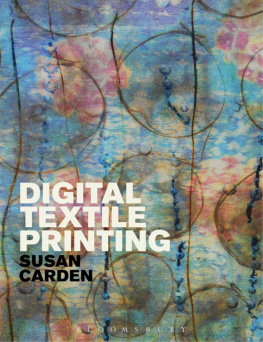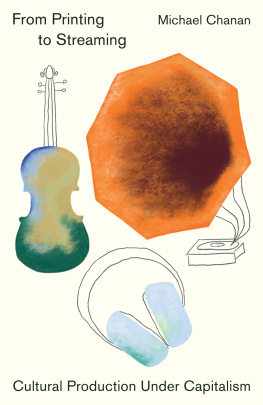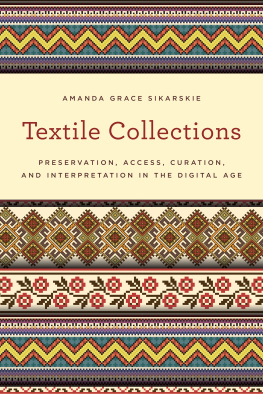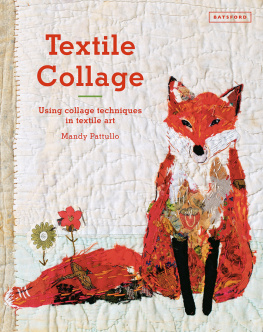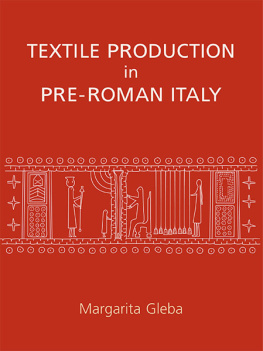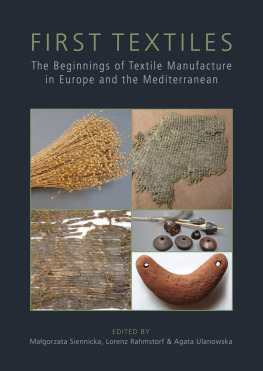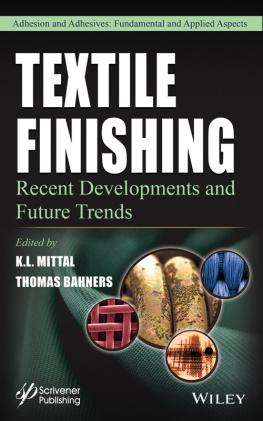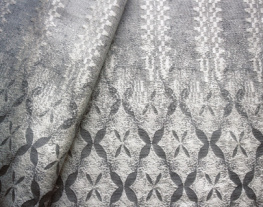DIGITAL
TEXTILE
PRINTING
Textiles that Changed the World
Series Editor: Linda Welters, University of Rhode Island, USA
ISSN: 1477-6294
Textiles have had a profound impact on the world in a multitude of ways from the global economy to the practical and aesthetic properties that subtly shape our everyday lives. Pioneering in approach, this series chronicles the cultural life of individual textiles through sustained, book-length examinations, focusing on historical, social and cultural issues, and the myriad ways in which textiles ramify meaning. Each book is devoted to an individual textile, to a dye, such as indigo or madder, or to a technique that characterizes a particular type of cloth. Books in the series are handsomely illustrated with color as well as black-and-white photographs.
Previously published in the Series
Tartan
Jonathan Faiers
Felt
Willow Mullins
Cotton
Beverly Lemire
DIGITAL
TEXTILE
PRINTING
SUSAN CARDEN
Bloomsbury Academic
An imprint of Bloomsbury Publishing Plc

Bloomsbury Academic
An imprint of Bloomsbury Publishing Plc
50 Bedford Square | 1385 Broadway |
London | New York |
WC1B 3DP | NY 10018 |
UK | USA |
www.bloomsbury.com
BLOOMSBURY and the Diana logo are trademarks of Bloomsbury Publishing Plc
First published 2016
Susan Carden, 2016
Susan Carden has asserted her right under the Copyright, Designs and Patents Act, 1988, to be identified as Author of this work.
All rights reserved. No part of this publication may be reproduced or transmitted in any form or by any means, electronic or mechanical, including photocopying, recording, or any information storage or retrieval system, without prior permission in writing from the publishers.
No responsibility for loss caused to any individual or organization acting on or refraining from action as a result of the material in this publication can be accepted by Bloomsbury or the author.
British Library Cataloguing-in-Publication Data
A catalogue record for this book is available from the British Library.
ISBN: | HB: | 978-1-4725-3568-9 |
ISBN: | PB: | 978-1-4725-3567-2 |
ePDF: | 978-1-4742-6029-9 |
ePub: | 978-1-4742-6028-2 |
Library of Congress Cataloging-in-Publication Data
Carden, Susan.
Digital textile printing / by Susan Carden.
pages cm. -- (Textiles that changed the world, ISSN 1477-6294)
Includes bibliographical references.
ISBN 978-1-4725-3568-9 (HB) -- ISBN 978-1-4725-3567-2 (PB) -
ISBN 978-1-4742-6029-9 (ePDF) -- ISBN 978-1-4742-6028-2 (ePub)
1. Textile printing. 2. Digital printing. I. Title.
TP390.C37 2015
667.38--dc23
2015016055
Series: Textiles that Changed the World, 1477-6294
Typeset by Fakenham Prepress Solutions, Fakenham, Norfolk NR21 8NN
CONTENTS
Front cover: Digitally printed silk satin. Susan Carden. Digital textile print. 2013. Photograph by Louis Carden. |
. |
. |
. |
. |
. |
. |
. |
. |
. |
. |
. |
. |
. |
. |
. |
. |
. |
. |
. |
. |
. |
. |
. |
. |
. |
. |
. |
. |
. |
This book is an inquiry into the nature, meaning and possibilities of digital textile printing from the perspective of a practising designer, academic and researcher. As this is a practice-based position, it facilitates a view across the application of advanced technology combined with creating and making by hand. It is primarily an exploration of how digital textile printing evolved, establishes its defining factors, and reflects on the wide range of new opportunities for contemporary designers and artists. Also highlighted are a number of ways in which practitioners are maximizing the advantages of advanced technology.
Digital textile printing is currently located at an interesting junction: it is inextricably linked to advances in technology, while at the same time it requires materials that originate in nature, visual creativity which is abstract, and, increasingly, it is produced within a demonstrably sustainable context. Not only are designers and their clients often located on different continents, but the various processes and components of digital textile printing may be situated in another place altogether.
This book also looks at how designers are approaching and challenging the conditions of practice, including associated opportunities. It shows that what may seem like a closed black-box system, in which a practitioner cannot influence how the process of digital printing is carried out, is not always the case. Even a limited number of opportunities, such as intervening after the coded image has arrived at the printer but before the dye has been applied, can offer scope for personal expression that results in novel outcomes.
The author recognizes and considers the pioneering work of a number of experienced practitioners and developers in this field, and reflects on the outcomes of a series of interviews conducted with designers who regularly use advanced technology in their work. These responses have helped to define multiple aspects of the digital textile printing provision, and while some characteristics impact positively on the images or motifs, other factors can nudge the design process down a path that is not always desirable. All of these positions are highlighted and presented from a variety of perspectives so that the reader can see the arguments from different sides. However, all the practitioners interviewed recognize the importance of advanced technology and are eager to utilize selected features of the process within their own practice.
The aim of this book is to demonstrate what can be achieved with digital textile printing. It also provides examples, and explanations, of how a variety of practitioners have successfully managed to negotiate their way through the range of options available to them. Creativity and the urge to make by hand are well embedded in the human condition, with handcrafted textile production of clothing and shelter being essential to humankinds survival as a species. When the opportunity is available to designers to combine these well-established skills with technological systems and processes, situations most practitioners would not previously have had to deal with, there is an opportunity to create something unexpected and extraordinary. Throughout this book it is the intention to better understand where the desire to impart marks on a movable surface began, and see where they might be located in a contemporary situation. These impulses started with painting on the walls of caves, but have now evolved to become compatible with creating images and patterns that are formed as code. This volume also seeks to identify how this creativity has been embraced and expanded upon in the digital landscape. This new environment encourages everyone to create more quickly, produce more, think about the pressure on natural resources, consider the methods and means of disposing of an item before we start to make it, and to do all of this to the highest possible aesthetic standards. These are ambitious goals for textile practitioners, but by examining the resources available to them, this book attempts to enable designers to create more efficiently and, therefore, more effectively.
Next page
